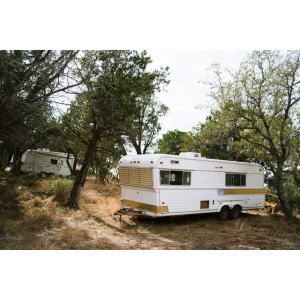Maintaining your RV doesn’t have to be overwhelming. With a few simple steps, you can ensure your home on wheels stays in great condition for years to come. Whether you use your RV for weekend getaways or cross-country adventures, following these essential maintenance tips will help you enjoy the journey worry-free.
1. Inspect Your RV Regularly
Regular inspections are the foundation of effective RV maintenance. It’s crucial to check both the interior and exterior of your vehicle at least once a month. Start with the roof, looking for any signs of damage or wear. Besides that, examine the sides for scratches or rust—these can lead to larger problems if not addressed promptly. Don’t forget to inspect the tires as well; they should be free of cracks and properly inflated.
A good inspection routine allows you to identify and address minor issues before they evolve into significant repairs. This step can save time and money in the long run. Make a checklist to keep track of what needs to be inspected, and use it every time you check your RV. Consistency is key; taking a few minutes regularly can help catch problems early.
2. Check and Maintain Tire Pressure
Tire pressure is something that often gets overlooked, yet it plays a massive role in your RV’s performance and safety. Maintaining the correct tire pressure ensures better fuel efficiency, improves handling, and reduces the risk of blowouts. Plus, it contributes to a smoother ride, which is essential for those long trips.
To maintain optimal tire pressure, invest in a reliable pressure gauge. Check the pressure when the tires are cold, as heat can cause a false reading. Refer to your RV’s manual for the suggested PSI (pounds per square inch) specific to your model. Additionally, inspect the tread depth regularly; worn tires can lead to diminished traction, especially in wet conditions.
3. Clean and Seal Roofs
The roof is a critical area that protects your RV from the elements. Keeping it clean and sealed is essential for preventing leaks and damage. Start by washing the roof thoroughly to remove any dirt or debris. A clean surface helps you identify any cracks or vulnerabilities that need attention.
Once clean, inspect the seals around vents and seams. Apply a suitable RV roof sealant to ensure it’s watertight. This process should be done at least once a year, especially before the rainy season. A well-maintained roof saves you from costly repairs down the line and ensures a dry, comfortable environment inside your RV.
4. Examine the Plumbing System
Your RV’s plumbing system is vital for comfort while on the road. Regularly check for leaks, clogs, and signs of wear in hoses and pipes. If left unattended, even small leaks can turn into major issues, leading to water damage and costly repairs.
During each inspection, run water through the sinks and shower to ensure everything drains properly. If you notice slow drainage, it may be time to address clogs—common culprits include hair, soap scum, or food particles. Flushing your system with a product designed for RVs can help clear out build-up and maintain a healthy plumbing system.
5. Keep Your Battery Charged
Your RV’s battery is its lifeblood. Maintaining a fully charged battery is essential for all electrical functions and the overall health of your RV. It’s important to check the battery’s water levels and give it a clean every few months; this can help prolong its life and improve performance.
Consider investing in a smart battery charger that can monitor your battery health. This way, you can avoid the frustrations of a dead battery during your adventures. Furthermore, if your RV sits for an extended period, connect it to the charger periodically to keep it charged and ready to go. A well-maintained battery ensures you’re never left stranded when you’re ready to hit the road.
6. Inspect and Clean Air Filters
Air filters in your RV play a crucial role in maintaining air quality and protecting the engine. A clogged filter can restrict airflow, leading to poor performance and increased fuel consumption. Make it a habit to inspect your air filters regularly, and change them as recommended or more often if you notice reduced performance.
Cleaning or replacing the air filters is a simple task that can significantly improve your RV’s efficiency. When you clean them, be sure to follow the manufacturer’s instructions to avoid any damage. Clean filters not only help your RV run efficiently but also ensure a fresh and breathable atmosphere inside.
7. Test Your Smoke and Carbon Monoxide Detectors
Safety should always be your top priority when it comes to RV maintenance. This is where smoke and carbon monoxide detectors come into play. These devices are your first line of defense against potential dangers. Regularly testing them ensures they are fully operational when you need them most.
Replace the batteries at least once a year, or more frequently if you notice any warning lights. Also, check the expiry date on the detectors; they usually need replacing every five to seven years. By staying on top of these safety devices, you can travel with peace of mind, knowing you’ve taken the necessary precautions.
8. Check Your Heating and Cooling Systems
Your RV heating and cooling systems are vital for comfort during any season. Before embarking on a trip, verify that both systems function correctly. A broken heater can turn a winter getaway into a chilling experience, while ineffective air conditioning can make summer trips unbearable.
To ensure optimal performance, clean air conditioning filters regularly and check the heater’s ductwork for blocks or leaks. Consider scheduling a professional inspection every couple of years to catch any potential problems before they arise. It may seem like an extra hassle, but a little maintenance goes a long way in guaranteeing your comfort on the road.
9. Flush the Water Heater
Your RV’s water heater is essential for enjoying warm showers and clean dishes. Flushing it out at least once a year is crucial to remove sediment buildup. Over time, mineral deposits can accumulate, reducing efficiency and potentially leading to costly repairs.
Flushing is a straightforward process: turn off the power, connect a hose to the drain valve, and let the water flow out until it runs clear. Then, close the valve, refill the tank, and turn the power back on. This small step is often overlooked but can significantly enhance the performance and lifespan of your water heater.
10. Inspect the Awning and Slide-Outs
Your RV awning and slide-outs are essential amenities that enhance your camping experience. Regularly inspect the awning for rips or tears, and check that the mechanism works smoothly. A damaged awning can lead to unwelcome surprises during a rainstorm, so keeping it in good shape is essential.
For the slide-outs, ensure that they open and close without any issues. Examine the seals for signs of wear, and clean the tracks to prevent any obstruction. Regular maintenance in this area maintains both functionality and aesthetic appeal, ensuring your RV is always ready for the next adventure.
11. Keep the Interior Clean and Organized
A clean and organized RV interior is crucial for comfort and usability. Regularly deep clean your RV—this includes vacuuming, dusting, and sanitizing surfaces. A tidy space not only feels welcoming but also prevents dirt and grime from accumulating, which can lead to unpleasant odors and attract pests.
Consider implementing a storage system to keep things organized. Utilize baskets or bins to categorize your items, making it easier to locate essentials during your trips. Additionally, regularly decluttering will help you keep track of what you need and ensure you’re not carrying unnecessary items. A well-maintained interior makes for a much more enjoyable journey.
12. Check for Leaks and Damage
Leaks can be a major culprit in RV maintenance, leading to water damage and structural issues. Regularly inspect your RV for any signs of leaks, particularly in the roof and around windows and doors. Catching these issues early can save you from costly repairs and ensure your RV remains safe and cozy.
In addition to water damage, keep an eye out for any signs of mold or mildew, as these can pose health risks. Combat these issues by maintaining proper ventilation and promptly addressing any water intrusion. Make it a routine to check under sinks, around the toilet, and behind cabinets to maintain your RV’s integrity.
13. Schedule Regular Professional Inspections
While self-maintenance is crucial, scheduling regular professional inspections is equally important for your RV. Experts can identify potential issues you might overlook, ensuring that your vehicle remains in peak condition. Aim for an inspection at least once a year, or more frequently if you travel extensively.
During these inspections, professionals will check various systems and components, including the brakes, suspension, and electrical systems. Investing in these services can prevent minor issues from becoming significant repairs, ultimately saving you both time and money. Remember, a well-cared-for RV stands the test of time.
14. Update Your RV Insurance
When it comes to RV maintenance, staying updated on your insurance coverage is crucial. Life can be unpredictable, especially on the road, so having the right insurance protects your investment. Review your policy regularly, making sure it fits your current needs and offers adequate coverage.
Consider any updates or modifications you’ve made to your RV; these changes might affect your policy and rates. A comprehensive insurance policy ensures that you are covered for damages, losses, and liability, providing peace of mind as you travel. Don’t hesitate to reach out to your insurance provider for any questions or clarifications.
15. Stay Informed About RV Maintenance Trends
The world of RV maintenance is always evolving, and staying informed is essential. Subscribe to RV magazines, join online forums, or follow social media accounts dedicated to the RV community. These resources offer valuable tips, product recommendations, and updates on the latest maintenance trends.
Additionally, participating in RV shows or community gatherings is a great way to learn from fellow enthusiasts. Sharing experiences and insights can open up opportunities for new techniques and tools. Knowledge is power; the more informed you are, the better equipped you’ll be to care for your RV, ensuring endless adventures.







